
At 25 years, Ian Brown has been in the music business for as long as I’ve been on the earth, and with his sixth solo album ‘My Way’ recently released to good reviews, shows no sign of bowing out anytime soon. But the swaggering Northerner’s success can not be taken for granted; after all, the smart money was on lead guitarist John Squire to become the big solo sensation when The Stone Roses split, and seemed likely to do so with the successful release of The Seahorses’ ‘Do It Yourself’ in 1997. Yet the band’s sound quickly dated and after
The Independent referred to his 2002 solo debut, ‘Time Changes Everything’, as “one of the most pointless releases of the year”, Squire decided to concentrate on his art.
Instead it was front man Brown who emerged the lone star, proving able to stun and satisfy his loyal following nearly 15 years on from the dissolution of Madchester’s biggest baggy band. Being without a traditionally great voice or any obvious technical command over music, there remains an unwritten rule that the singer must continue to justify his top dog – or should that be monkey – status; and with each new release he rises to the challenge, exceeding expectations by remaining current, changeable and ambitious. Take his former band out of the equation and Brown’s solo work validates him as one of pop’s most innovative musical talents on its own merit.
Unfinished Monkey Business (1997)
The resounding feel of Brown’s first lone venture was just as it said on the tin – unfinished. Many songs seem based on half ideas, thrown together and hurriedly executed. And while the dirge of single ‘My Star’ earned Brown the joint highest chart position of his solo career (‘Dolphins Were Monkeys’ also charted at #5), this was more likely due to a hangover effect from the heady days of the Roses’ than its own musical merit. However, the album offered up a few hints of the greatest that was to come from Brown. The potent, brooding guitar riff and soulful harmonica solo in ‘Corpses in Their Mouths’ proved hypnotic, while the lyrics, slamming music industry hangers-on, indicated that there was more to Brown than the swagger we knew from the Roses.
Highlights: Corpses in Their Mouths, Nah Nah
Golden Greats (1999)
Partly written while Brown was serving a spell in Strangeways for an alleged air-rage outburst, Golden Greats layers feelings of claustrophobia and frustration over industrial electronic beats and sophisticated psychedelic textures. While marking a departure from the classicalist song structures of the Roses and clearly cutting ties with his former-fellow-songwriter, the album is packed with powerful riffs and hooks and remains Brown’s most vehement work to date. 'Golden Greats' established Brown as a man with great musical ambitions, the capabilities to proficiently execute his ideas and above all, as a force to be reckoned with.
Highlights: Gettin’ High, Free My Way, Set my Baby Free, Golden Gaze
Music of the Spheres (2001)
His most consistent solo album, ‘Music of the Spheres’ saw Brown in pensive mood, teaming spectral vocals with soaring astral arrangements to create an astoundingly rich ride. The sharp word-play, shattering strings, lush acoustic guitars and spacey beats on Brown’s most well-loved hit F.E.A.R. sum-up the album in one perfect four-and-a-half-minute trip; cementing the King Monkey’s lucrative love affair with loaded orchestral arrangements and mechanical beats. It also saw Brown’s sole straight-up ballad, ‘El Mundo Pequeno’ - sung entirely in Spanish -, reveal the growing influence of his Mexican wife.
Highlights: F.E.A.R, The Gravy Train, Northern Lights, Whispers
Solarized (2004)
The two singles from Brown’s fourth solo album, ‘Keep What Ya’ Got’ – featuring Noel Gallagher – and ‘Time is my Everything’, represented a return to more traditional pop structures. However, this being Brown, something new had to be brought to the table – in this case, mariachi trumpets reminiscent of
Love’s ‘Alone Again Or’. The album proved accessible and up-beat, with catchy melodies and mystical textures; be it lacking the impressive arrangements of MOTS. ‘Solarized’ also saw Brown dip his toe in the dubious waters of political comment with ‘Kiss Ya Lips (no I.D.)’, in training to take the plunge on ‘The World is Yours’.
Highlights: Time is my Everything, Solarized, The Sweet Fantastic, Keep What Ya Got
The World is Yours (2007)
Arguably one of his best works, ‘The World is Yours’ hailed the return of MOTS’s rich orchestral arrangements to the point that, stripped back from the lyrics, it could have served as a James Bond sound-track. Full of suspense, conviction and menace, the tapestry woven by soaring strings, triumphant trumpet outbursts and screaming electric guitars rendered Brown’s cliches and laboured assertions of inarguable truths about the state of the world – “Save us from warmongers who'd bring on Armageddon; Save us from all of those whose eyes are closed to the plight of the African child” - forgivable.
Highlights: The World is Yours, Sister Rose, Save Us, Some Folks are Hollow, Eternal Flame
My Way (2009)
While the cliches remain in Brown’s latest offering, hear ‘The Crowning of the Poor’, for example, the dirty dance beats of ‘Marathon Man’ and ‘Own Brain’ – an anagram of Brown’s “own name”, as he helpfully points out – and bouncy keyboard riff of single ‘Stellify’ make it most comparable to the swagger of ‘Golden Greats’. The album’s hidden gem is arguably the understated ‘For the Glory’, which sees a retrospective Brown deliver a shimmering chorus and glittering middle-eight over ricocheting beats, with the help of prolific hit-writer, and new president of
Epic, Amanda Ghost.
Highlights: For the Glory, Marathon Man, Own Brain








 Lana Clements explains how Noughties style looked backwards to cherry-pick the best of decades past.
Lana Clements explains how Noughties style looked backwards to cherry-pick the best of decades past.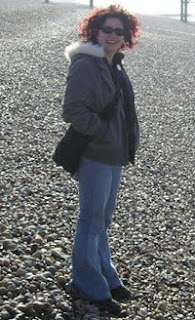 Journalist Sarah Lewis-Hammond on why Nineties style rocked.
Journalist Sarah Lewis-Hammond on why Nineties style rocked.  Caroline O'Donoghue explains why the OTT Eighties were the decade for all things glamour.
Caroline O'Donoghue explains why the OTT Eighties were the decade for all things glamour.  Stylist Lou Taylor on the swinging Seventies.
Stylist Lou Taylor on the swinging Seventies. Why I think you can’t beat the Sixties for fabulous fashion.
Why I think you can’t beat the Sixties for fabulous fashion. In the first of a new series in which guest writers tell us about their favourite decade for style, journalist and lindyhopper Katie Allen champions the Fifties rockabilly look.
In the first of a new series in which guest writers tell us about their favourite decade for style, journalist and lindyhopper Katie Allen champions the Fifties rockabilly look. With two flyers for vintage and second-hand clothes events having taken pride of place on my fridge door for the past couple of weeks, this weekend was one eagerly awaited, and it didn’t disappoint.
With two flyers for vintage and second-hand clothes events having taken pride of place on my fridge door for the past couple of weeks, this weekend was one eagerly awaited, and it didn’t disappoint.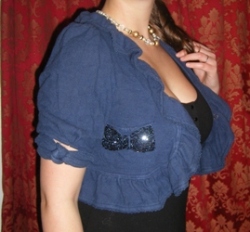
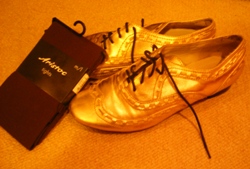



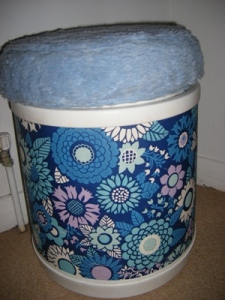
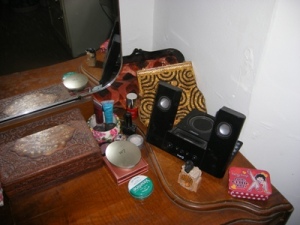
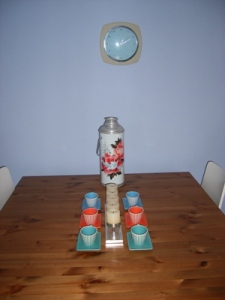
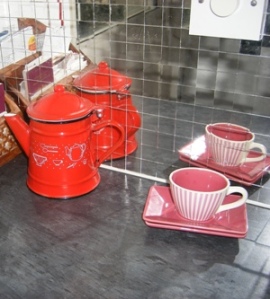
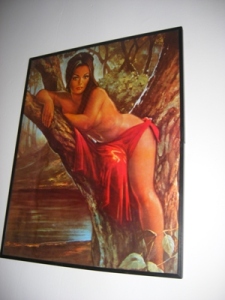
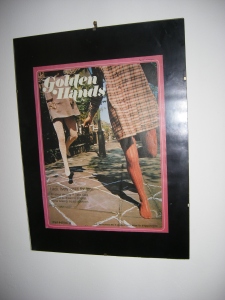
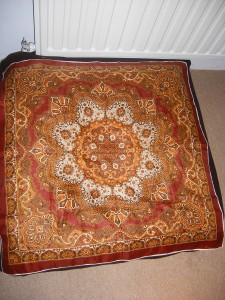
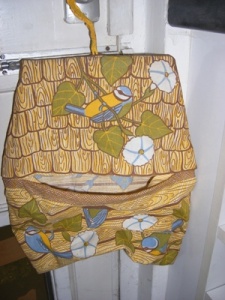
 At 25 years, Ian Brown has been in the music business for as long as I’ve been on the earth, and with his sixth solo album ‘My Way’ recently released to good reviews, shows no sign of bowing out anytime soon. But the swaggering Northerner’s success can not be taken for granted; after all, the smart money was on lead guitarist John Squire to become the big solo sensation when The Stone Roses split, and seemed likely to do so with the successful release of The Seahorses’ ‘Do It Yourself’ in 1997. Yet the band’s sound quickly dated and after The Independent referred to his 2002 solo debut, ‘Time Changes Everything’, as “one of the most pointless releases of the year”, Squire decided to concentrate on his art.
At 25 years, Ian Brown has been in the music business for as long as I’ve been on the earth, and with his sixth solo album ‘My Way’ recently released to good reviews, shows no sign of bowing out anytime soon. But the swaggering Northerner’s success can not be taken for granted; after all, the smart money was on lead guitarist John Squire to become the big solo sensation when The Stone Roses split, and seemed likely to do so with the successful release of The Seahorses’ ‘Do It Yourself’ in 1997. Yet the band’s sound quickly dated and after The Independent referred to his 2002 solo debut, ‘Time Changes Everything’, as “one of the most pointless releases of the year”, Squire decided to concentrate on his art.





